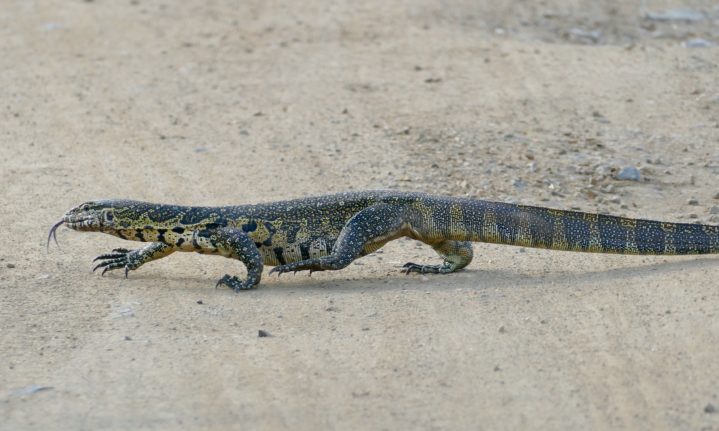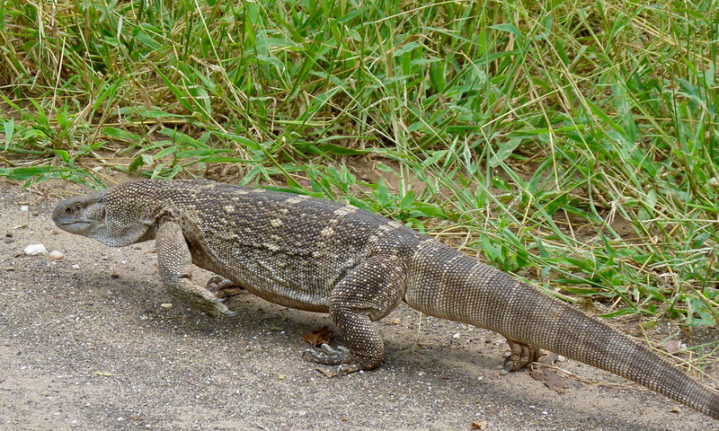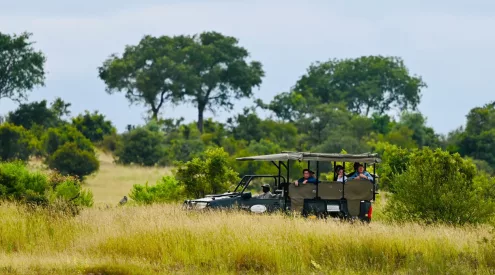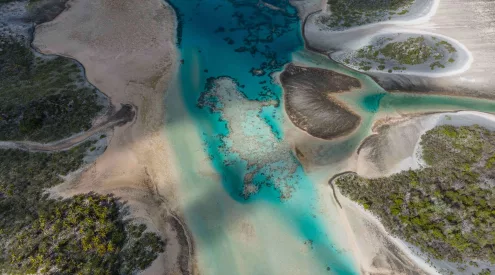We all know South Africa’s Big 5, we may even know the Little 5 and the Ugly 5, but how much do you know about South Africa’s monitor lizards?
There are two species of monitors found in South Africa – the water monitor (Varanus niloticus) and the rock monitor (Varanus albigularis).
Admittedly, I didn’t know much about these scaly creatures either, which is why I called on herpetologist and evolutionary biologist Dr Chad Keates.
‘When I am not in the lab or the classroom, I am out in the field, photographing the amazing herpetological diversity that the sub-continent has to offer. In my short time as a herpetologist I have traversed much of southern Africa, and more recently Angola and Zambia, with the likes of National Geographic, Okavango Wilderness Project and Hankuzi Expeditions,’ said Keates, a post-doctoral fellow in the department of zoology and entomology at Rhodes University.
Water monitor

Varanus niloticus. Credit: Bernard DUPONT/Flickr Commons
Description: This lizard has an elongated head with a flat tail and is covered in black and yellow scales. They range between 1.2m and 2.5m in length. Young monitors tend to be more vividly coloured.
Diet: Also known as Nile monitors, these creatures consume a wide variety of freshwater crabs as well as mussels, fish, birds and frogs. They are known to eat crocodile, sea turtle and terrapin eggs. Young monitors stick to reed beds in shallow waters and eat frogs and insects.
Habitat: Water monitors are found in water sources from sea level to as high as 1 600m above sea level.
Reproduction: Female water monitors lay up to 60 eggs in termite mounds. They hatch between four and six months later.
Distribution: Water monitors make their homes in the eastern parts of southern Africa, as far south as Seekoei River in the Eastern Cape. They are not found in the Western Cape.
Threats: Threats to water monitors depend on their size. When they are small, they have more predators than when they are larger in size. When they are small, their meso predators are caracals, raptors and leopards. When they are bigger, crocodiles and southern African pythons pose the biggest threat.
Conservation status: Least Concern on the IUCN Red List
Fun fact: Water monitor lizards are the biggest lizards in Africa.
They posed virtually no risk to humans, said Keates. It took ‘a lot of talent to get bitten by one of these animals’, he said jokingly. Although being bitten by a water monitor is unpleasant, it is most definitely not life threatening.
Rock monitor
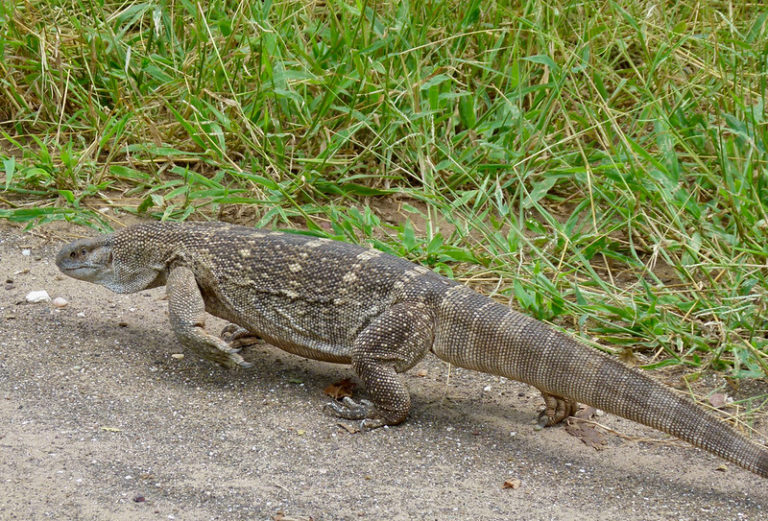
Varanus albigularis. Credit: Bernard DUPONT/Flickr Commons
Description: The rock monitor is smaller than its aquatic counterpart but has a larger snout and stocky limbs. Its tail is longer than its body, which is covered in dark brown scales with dark blotches across the back. Rock monitors range from 1m to 1.5m in length.
Diet: Although they mainly eat invertebrates, they will eat carrion and baby tortoises.
Habitat: As their name suggests, rock monitors are found near rocky outcrops where they burrow underneath rock overhangs.
Reproduction: Female rock monitors lay eight to 50 eggs per reproductive season, in soft soil.
Distribution: They are widespread throughout the savannah and semi-arid areas of the southern and eastern parts of southern Africa. They are not found in the Western Cape or the southern parts of the Northern Cape.
Threats: As with water monitors, juvenile rock monitors are more at risk than adults. Again, their predators are caracals, raptors, leopards, crocodiles and southern African pythons.
Conservation status: Least Concern on the IUCN Red List
Fun fact: When threatened, a rock monitor may eject its cloacal contents or pretend to be dead.
Similar to the water monitor, these creatures pose no significant risk to humans, aside from a very powerful bite if provoked.
Even though the rock and water monitors are listed as Least Concern on the IUCN Red List of Threatened Species and they pose virtually no threat to humans, superstition and stigma surrounding these creatures cause people to kill them indiscriminately.
Spread the word: rock and water monitors are practically harmless and if you see them in nature, leave them alone.
ALSO READ
Cape of Good Hope SPCA responds to oil spill in Hout Bay harbour









